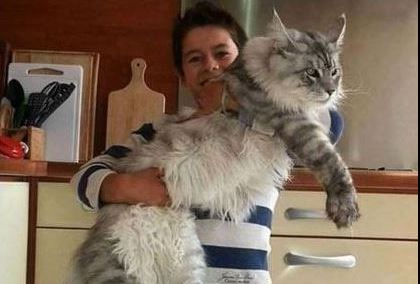When admiring our serenely sleeping norwegian forest cats for sale curled up cosily at the end of the bed it’s hard to rationalise that these beautiful elegant creatures who have become affectionate companions and confidants over the years are in reality lean, mean killing machines when it comes to their eating habits.
For most cat owners, the fact that we are actually harbouring a skilled assassin is something we would rather turn a blind eye to. However, the impressive features of a natural born predator are hard to deny; strong agile bodies with lightning reflexes, stealthy silent gait, razor sharp claws, long canine teeth, excellent night vision, highly attuned hearing and a superior sense of smell.
Acknowledging the glaringly obvious truth about these unique creatures we share our lives with is fundamental to understanding all aspects of their healthcare. So why does this often get forgotten when it comes to the most essential of topics – cat food nutrition!
What are you feeding your cat?
Vet’s Klinic Clinical Director and veterinary practitioner, Jenny Philip BVMS MRCVS, knows the importance of giving your cat a science based natural balanced diet, which gives them the nutrients they need to thrive knows first-hand how deficient some commercially prepared cat food brands can be from a nutritional point of view.
Currently 70% of UK cat owners feed a commercially prepared diet to their cat, of which half feed a mix of wet and dry cat food; the other 30% of owners feed table scraps, raw meat based diets or allow their cats to eat live prey.
Raw and live prey animal cat food diets are potentially very biologically appropriate. However, at home prepared diets are notoriously difficult to balance correctly and can be time consuming and inconvenient for most. Worryingly, a recent study in the US found 84% of these home prepared diets are deficient in multiple nutrients.
Even so, some commercially prepared cat food diet recipes are just as inappropriate; they may well balance better on paper but it only takes a glance at the back of a packet of some of these commercial cat foods to highlight their inadequacies.
For example, take the two best market leading dry cat food brands; the analytical constituents (this is the ingredients in the cat food) read 30-32% protein, 10% fat and 7.5-8.5% ash. What the manufacturer doesn’t need to declare is the carbohydrate content. Most of these dry diets are over 40% carbohydrate and rely on the carbohydrate to create the kibble structure. So why is a high carbohydrate content in a cats diet a concern?
Are Cats Carnivore or Omnivore?
Cats do not need a high carbohydrate diet, in fact it goes against their biological makeup
Cats are biologically different to us; they are classified as obligate carnivores. If you are a ‘Carnivore’ you derive your energy and nutrients from a diet exclusively or mainly from animal tissue. If you are an ‘Obligate Carnivore’ you depend solely on animal tissue as opposed to a facultative carnivore that, in the absence of meat, can choose to use non-animal sources for their nutritional requirements. In contrast, humans are classed as omnivores, deriving their energy from a variety of food sources, and dogs are a topic of controversy and can be classified as either omnivore or facultative carnivores.
The domestic cat’s natural diet consists of small rodents and mammals. On average a prey item is 62% animal derived protein, 10% fat with 14% ash, which is mainly mineral content from bone (see the table below).

